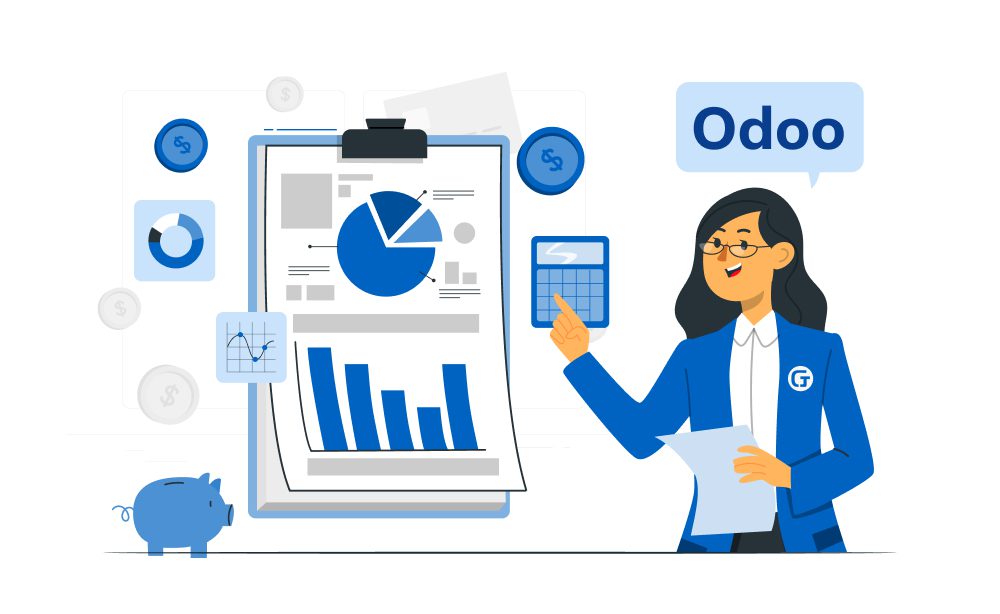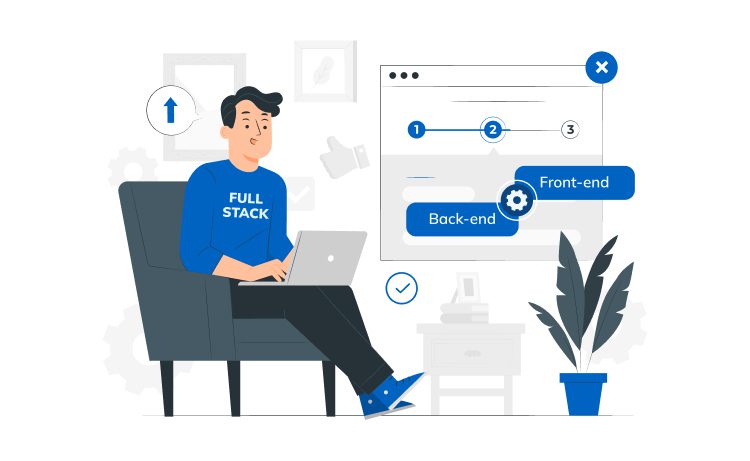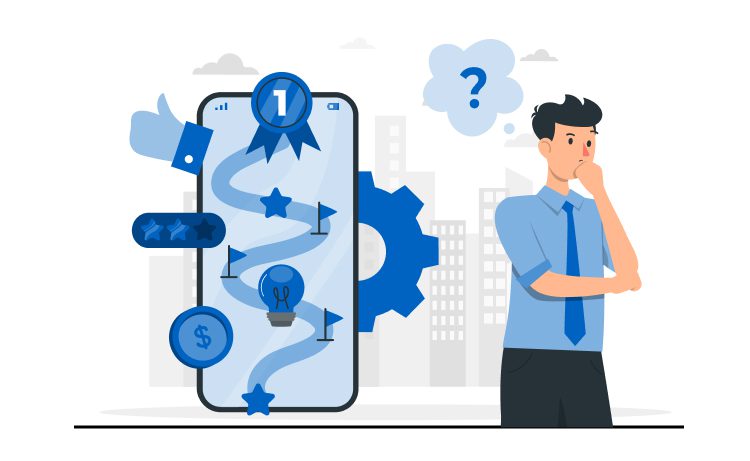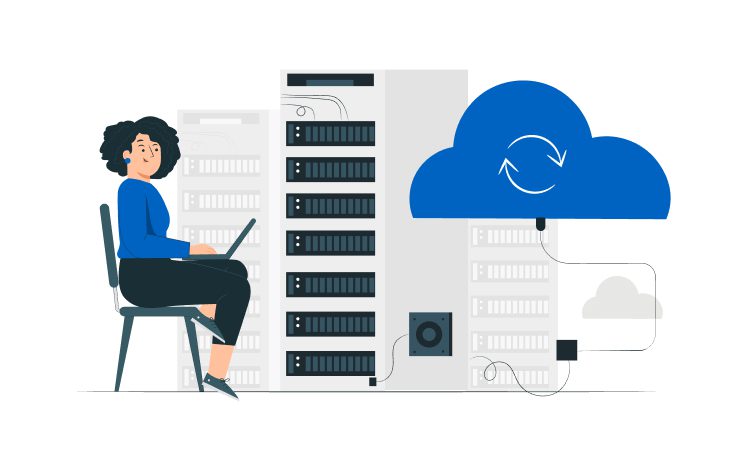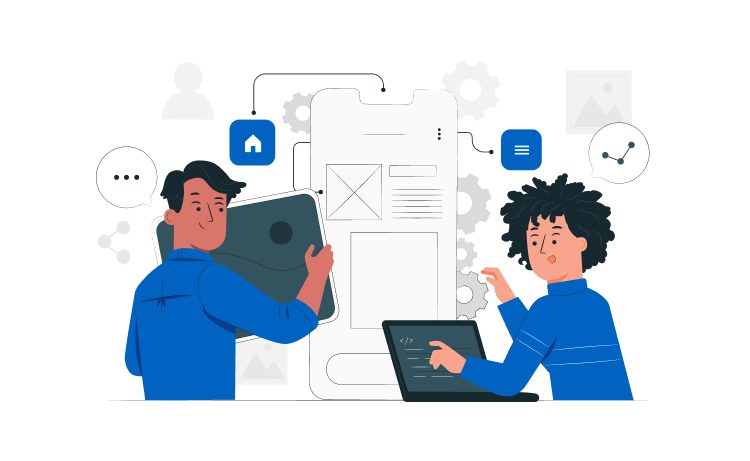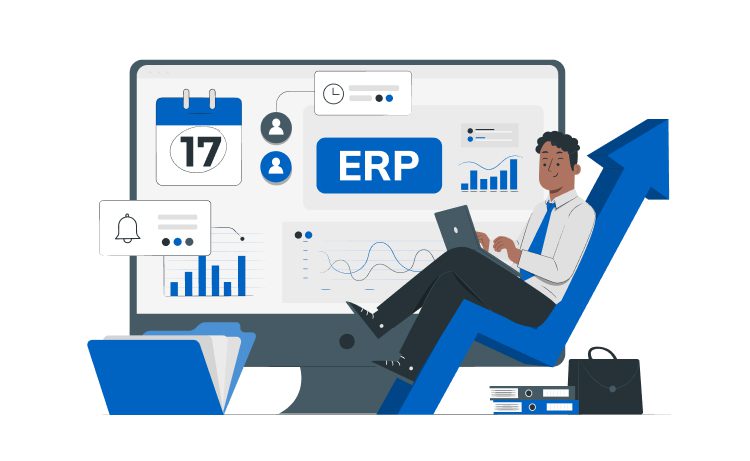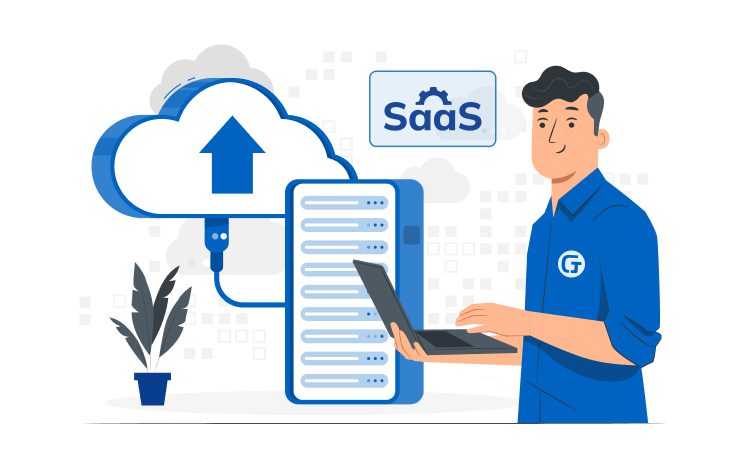
Step-by-Step Guide to SaaS Application Development in 2025



The software industry has been completely transformed by the advent of Software as a Service (SaaS), offering an abundance of cost-effective, convenient and easily accessible solutions. To create a successful SaaS application though is not easy, so what does it take? Here we will discuss all that goes into SaaS app development. From understanding its main components and advantages to building the right kind of development team while managing challenges along the way. Let’s find out how this type of application can be developed in order to achieve success.
In 2022, the SaaS market globally valued at $261.15 billion. Between 2023 and 2030, it’s to grow at a 13.7% CAGR (compound growth annual rate) to the size market and share analysis trends by View Grand Research.
Businesses everywhere are increasingly adopting solutions cloud, and enterprises will transfer over 60% of to the cloud workflows by 2025 — to capture their projected piece in EBITDA ($3 trillion earnings before interest, taxes, and depreciation amortization) value by 2030.
Companies are spending considerable amounts to achieve this goal. As reported by Gartner in 2022, their worldwide spending end-user forecast, worldwide users $491 billion on spent services cloud. By the end of 2023, this amount is expected to reach a billion $597.3.
Though companies are significantly increasing their investment in SaaS, a recent article by McKinsey, building Resiliency in the cloud, has revealed that fewer than 10% of some of the surveyed world’s largest companies have transferred critical business to workloads the cloud.
Content
SaaS applications have seen exponential growth due to their capability of providing a unique set of features and services through cloud-based software delivery. Traditional software licensing and installation are no longer necessary, as SaaS apps leverage the power of cloud computing for quick access from any web browser or device with internet connection. This has made saas products much more accessible, efficient, and popular among different user groups such as companies and startups alike.
Cloud services help enable this easy deployment model making it possible for users around the world to take advantage of a fully functional SaaS platform without having to install traditional software packages or worry about complex setup procedures involving various types of license agreements commonly associated with many other kinds on non-cloud based software distribution model and models.
The successful creation of a SaaS application begins with the architecture, which utilizes cloud-based hosting through an established cloud provider for enhanced scalability, security and cost effectiveness. Multi-tenant architecture is often employed as part of this approach due to its increased affordability over single tenant systems. To get the most out of your saas business model it’s important to choose wisely from available technology stacks that can combine modern advancements in tech along with more well known ones so new features or trends become easily adaptable into your app’s framework without having to develop something entirely new each time . Having experienced experts help you find what works best for your Saas project will increase its chances at success greatly since licensed software falls short when compared against these flexible solutions.
Successful development applications for both the B2B and B2C markets, such as Salesforce, Dropbox, and Slack has opened up a new world of possibilities. These offerings provide customers with easy-to-use interfaces along with customized options that can cater to various industries like CRM, customer relationship management, services data storage solutions or collaboration tools.
These popular SaaS platforms have set an impressive precedent for any incoming companies in this market space – high standards that they must live up to if they wish to be competitive within it. Younium revenue recognition software is a good example of a B2B SaaS product that helps record revenue as per the rules and regulations.
SaaS app development offers numerous advantages when compared to traditional software, such as financial efficiency and adaptability. This business model reduces costs associated with upfront investment while simplifying deployment and allowing for scalability that is more difficult through conventional programming methods. Businesses are provided reliable revenue streams at lower prices due to the subscription-based system of SaaS solutions.
Companies benefit from faster timeframes between idea conception and market release owing to streamlined processes in combination with cloud delivery systems enabling new features every two or three weeks thus providing a responsive approach to business growth built on customer feedback using Minimum Viable Product (MVP).

By utilizing the SaaS model, businesses can benefit from having a consistent revenue stream and lowered unit costs. Cash flow is improved while focusing on innovation and scalability due to reduced upfront app development expenses associated with the flexibility of this type of software delivery system. It allows users access to updated features at any time which helps maintain accessibility for all customers as well as improving overall cashflow performance in order to facilitate Growth opportunities.
SaaS software development is rapidly transforming the traditional way of creating applications due to its efficient launch process and regular updates. Companies can test their ideas with minimal effort by introducing a Minimum Viable Product (MVP), which provides customer feedback that helps refine the product before it goes into full production, leading to increased loyalty among customers. Cloud-based deployment makes bug fixes easy without compromising on user experience – this saves time compared to conventional approaches of software development. The agile approach allows businesses sufficient flexibility in responding quickly and precisely accordingto changing market conditions for greater long term success!
To ensure the success of a SaaS application, development must follow an orderly process that starts with roadmapping for foundations and customer needs. It is paramount to maintain service-oriented thinking among each team member while keeping scalability in mind throughout the entire progression. Cooperation between developers and other stakeholders SaaS development company will be imperative as they collaborate together towards creating an optimal end product based on what customers want from it. To begin effectively, businesses should have focus on being consumer focused by researching requirements followed by evaluating customer expectation prior to any creation or design stages taking place.

In order to ensure success and stand out in the competitive market, development must include idea generation and validation. By collaborating with clients during the analysis stage as well as utilizing customer feedback for insight on their product vision and business goals saas product development, companies are able to create a tailored solution that meets all needs of potential customers. Through thoughtful market research conducted at the early stages of development process they can guarantee an optimal outcome from their SaaS application.
UX/UI design plays an important role in development, allowing businesses to create attractive and user-friendly applications that meet the needs of different types of users. Consideration should be given to how well the designs fit across a range of resolutions seen on various devices.
By giving due attention towards ensuring that both usability and aesthetics are met, organizations can develop a SaaS application which is effective for their desired target market while encouraging customer engagement.
The development and quality assurance of a SaaS application is essential for confirming the proper functioning, performance, and security. To ensure these standards are met during testing phase, both manual examination as well as automated checks should be used. By including beta users in the process companies can gain important insights about potential use cases that were not originally contemplated when developing it. This leads to producing a more complete product with few issues or bugs.
Choosing an adequate technology & tech stack also needs careful consideration from software engineers involved in crafting your SaaS app – its framework & programming languages must meet your unique specifications while remaining adaptable enough so you benefit from scalability via cloud computing operations . This task requires coordination between architects & developers to make sure that infrastructure meets all growth objectives too, thus establishing a secure foundation at the early stages of building out their solution.
Once the SaaS application has undergone testing and is ready for deployment, maintaining it becomes a priority. This entails fixing bugs as well as offering support to customers in order to ensure they have an unproblematic user experience. Such activities are all key components of creating successful applications.
Using strategies such as blue-green deployment can guarantee zero interruption while making alterations so that businesses may update their apps without disturbing usage by consumers. Allocating money from their budget specifically towards maintenance upkeep together with using feedback gathered from users will help enterprises maintain success through adaptability when dealing with changing market needs associated with their SaaS applications line.
Saas product development process often offers many advantages compared to traditional software, but it is not without its challenges. Some of the most common difficulties include data security and keeping up with customer requests as well as finding experienced teams for engineering support. Companies that want to address these issues need a proactive approach where they are continuously evaluating and perfecting their SaaS program to keep customers satisfied while also meeting changing needs promptly. Working closely with knowledgeable developers who focus on end-users should be enough help for companies seeking success with their own SaaS applications targeting an intended audience. By considering all this, businesses can surmount any struggles encountered during Saas development and come away from the process having created something useful yet unique at the same time.

Integrating with third-party services can present a challenge in terms of SaaS development process, due to the need for an experienced development team that comprehends various APIs and is able to ensure faultless integration.
To confront this problem, businesses must make use of a professional technical squad along with knowledgeable Quality Assurance personnel who will be capable of executing both manual and automated tests so as to validate successful connection with external applications which could provide additional functionality plus better user experience on their SaaS platform.
By effectively leveraging tools from outside sources into their app infrastructure, companies are provided accesses greater potential & diversified benefits leading them closer towards achieving success for their application built using Software-as-a Service model.
When it comes to SaaS development, data security is of utmost importance. Regulations such as GDPR and HIPAA need to be met and customer data must be kept safe from harm. To ensure that this happens, secure database protocols should be implemented along with continuous monitoring and updating the application so potential threats are not overlooked.
Businesses can confidently reduce any risks regarding breaches in information by taking a proactive stance towards its safety while teaming up with an experienced development staff, doing so will protect their reputation amongst customers.
The goal of having zero downtime deployment is essential in SaaS development, as it guarantees that system updates and bug repairs can be applied without a decline in user satisfaction. Strategies such as blue-green deployment aid businesses to achieve this objective by allowing for an unproblematic transition from the current software version to the newer one with no major impact on users.
Plus, implementing blue-green deployments facilitate swift rollbacks if any issues arise, thus making sure that your SaaS application remains dependable at all times.
When creating a SaaS development team, businesses should be cognizant of the level of experience and expertise they can bring to the table. Companies have many options available when choosing who will construct their application: an in-house squad, outsourcing to external specialists or utilizing a combination approach with both internal and contracted sources. To ensure success for their app, firms must vet these teams cautiously taking into account background accomplishments as well as proficiency before coming together on this venture that is so instrumental in meeting customer needs.
The right SaaS development crew can really impact final product superiority plus operation – thus it’s important not only to employ knowledgeable resources but also ones capable of backing up outcomes obtained from past projects if applicable. By partnering with such experienced professionals , companies are able increase chances at producing something truly worthwhile which reaches its desired target audience effectively
In-house teams can be very beneficial for SaaS development, as they are aware of the company objectives and provide tailored solutions. They also have better control over the progress and agility to respond quickly to modifications. This approach may incur additional costs due to lack of specialist experience compared with an external team.
Hiring outsourced developers is a cost effective option that provides flexibility when it comes down to timelines or resources needed whilst still gaining accesses from a broad range of knowledgebase along with industry expertise.
There might not be same level depth in terms understanding internal operations which could lead any challenging situation hard overcome without direct communication links between companies lines staffs.
Overall both these methods offer distinctive advantages drawbacks should being considered carefully before committing either them two support successful deployment project run its course completely smoothly without interruption issues arise unknown foreseen circumstances come into play at given time frame.
Having a successful SaaS development team requires an assortment of expertise and roles, such as developers, architects, project managers, business analyst and other specialists. Having technical writers to write content that accurately reflects the application’s purpose, marketers to reach out target users, product manager who can make sure all requirements are being met would undoubtedly ensure its success in developing an effective SaaS applications for targeted audiences.
Compiling individuals with different skills into one cohesive group enables saas application developers and companies handle challenges related to creating a successful Saas application environment better while meeting customer needs at the same time.
The cost of developing a SaaS applications has to be taken into account, since various factors such as the location of the developers and how intricate the software is can contribute to overall expenses. It’s important for each team member involved in its creation process to stay up-to-date on project details, objectives and possibilities concerning scalability so that budgeting decisions are correct. With this service approach mindset businesses will have better chances at creating an effective SaaS application tailored towards their target audience while maintaining costs within set limits if they rely on qualified development teams. The resulting successful product should meet all customer requirements without going over spending expectations established by decision makers beforehand.
SaaS development costs can vary significantly based on several factors. Here are a few key elements that define these costs. Let’s take a look.
The geographic location of your development team plays a big role in determining the cost. For example, developers in North America and Western Europe typically have higher rates than those in Eastern Europe or Asia. Hourly rates can range widely from $50 to $150 per hour in the former regions, whereas in the latter, rates might range from $20 to $80 per hour.
The more complex and customized the software, the higher the development cost. A simple application with basic functionalities might cost anywhere from $10,000 to $50,000, whereas a complex, enterprise-level SaaS solution can easily exceed $100,000.
The choice of technologies also influences the cost. Emerging, cutting-edge technologies might lead to higher costs due to the need for more skilled professionals.
Apart from direct development costs, other expenses need to be considered:
Continuous maintenance and regular updates are crucial for SaaS applications. This can add an annual ongoing cost, usually a percentage of the initial development cost.
The costs for servers, cloud services, and other infrastructure elements can vary based on the scale of the application.
These costs are often overlooked but are vital for the success of a SaaS product. Marketing and sales can sometimes equal or exceed the development costs, especially in competitive markets.
Our company specializes in creating cutting-edge SaaS applications, and our work with BodyO is a prime example of our expertise and innovative approach in this field. BodyO aimed to develop a revolutionary software system that could accurately determine body fat levels and detect conditions like chronic heart disease and diabetes. Our challenge was to build this complex system from the ground up, integrating advanced technologies and ensuring compliance with stringent health data standards.

Real-Time Data Capture: We implemented sophisticated algorithms to enable the AiPod capsule to capture a broad spectrum of vital human parameters in real-time. This feature is crucial for providing immediate, accurate health assessments.
Medical Record Interpretation: Utilizing AI and machine learning, our system consistently interprets medical records, ensuring reliable and meaningful insights into the user’s health.
Data Anonymization System: We developed an automatic data anonymization system to comply with HDS (Health Data Storage) and RGPD (General Data Protection Regulation) standards. This protects users’ privacy and aligns with international data security norms.
Overall, saas application development company, provides businesses with a powerful and flexible option compared to traditional software development methods. This enables them to create cost-effective, scalable, and accessible solutions for their target audience at an affordable rate. Bringing successful Saas applications into reality requires the right team of developers as well as being mindful of the challenges in building these apps successfully. In other words, by taking full advantage of Saas applications, you can reach greater heights in business growth. Contact our managers to take all the benefits of SaaS app development.
The process of constructing cloud-based applications, encompassing creating documentation and design elements as well as testing and deployment on the server is known as SaaS application development.
To write a SaaS application, conduct market, client and competitor analysis, choose an app monetization model, plan for security and reliability in advance, plan for 3rd-party integration, select a technology stack, build an MVP and start the development process.
Professional tone and clear conclusions should be included throughout.
Software-as-a-Service (SaaS) is an approach to software delivery in which cloud hosted applications can be accessed by customers through a subscription arrangement.
SaaS platforms provide the necessary infrastructure for users, connecting them to and allowing them utilise SaaS based programs over the internet.
The advantages of SaaS development as compared to traditional software are numerous: faster time-to-market, reduced unit costs and cost efficiency, predictability when it comes to revenue generation along with simplified deployment that can be adapted quickly. All in all these benefits far outweigh those associated with classic software engineering approaches.
A successful SaaS development team requires a wide array of positions, such as developers, architects, project managers, technical authors and marketing pros along with product directors to work together efficiently in order to reach customer expectations.
